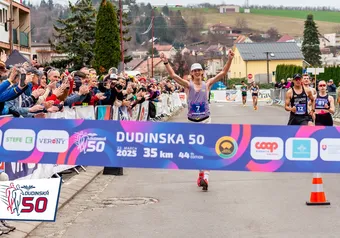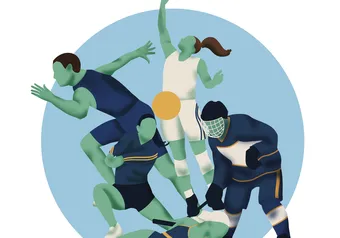Summer is officially here, and with it comes time for beach volleyball, BBQs and pickup basketball games. But, Vancouver has faced intense heat waves in recent years and BC is predicted to have another above-average summer.
With high temperatures looming overhead, it can be hard to stay cool while staying active. Here are The Ubyssey’s tips for exercising in hot summer weather.
A water bottle is your best friend
It’s not enough to only drink water during exercise. Before, during and after workouts, it is important to be hydrating your body.
Water is essential for regulating body temperature, which is mostly done through sweating. And although it cools you down, sweating also makes you lose water.
When exercising in hot weather, you lose water even faster. By hydrating all the time, not only during exercise, you’re taking proactive steps to prevent dehydration and keep yourself cool.
Tired of plain old water? Adding electrolytes or eating high water-content foods, like watermelon or oranges, can help replenish water loss in a more exciting way.
Be more chill
We’ve all been told that a cooldown after a workout prevents injuries. Under warmer temperatures, a cooldown is even more important to protecting your health.
A cooldown prevents the body from rapidly experiencing extreme temperatures. Although it might be tempting to go straight from a sprint to a cold shower, going from hot to freezing and back to hot creates stress on your body which could impact the ability to properly regulate its temperature.
A simple five routine gives your body time to adjust to a lower heart rate and return to its normal temperature. Once your body has initially cooled down, then you can hasten cooling with a cold shower, cold compress or even an ice bath if you’re brave (or desperate) enough.
For outdoor exercise, wearing loose, breathable clothing will circulate air next to your skin instead of sticking and generating heat. Avoiding sunburn lessens the likelihood of heat-related illnesses, so adding a hat and a layer or sunscreen can also help keep you cool outdoors.
Planning your exercise for the cool parts of the day, like early in the morning or later in the evening, helps to avoid peak heat and thus, avoid extreme temperature shifts in your body.
Your body, your choice
The impacts of warmer weather aren’t one size fits all — older individuals and people with compromised health are more vulnerable than other populations. Especially when it comes to exercising, you are the best judge of your body’s own limits. In more extreme conditions, don’t push yourself too hard or feel like you have to complete a hard workout. It’s okay to take a break.
That being said, increased temperatures increase the likelihood of heat-related illnesses, like heat exhaustion and heat stroke. Watch for symptoms of heat exhaustion, like a headache, dizziness, nausea and increased tiredness. If you experience any of these while exercising, stop and start to cool down with water in a cool location.
It’s important to look for the first signs of heat exhaustion since extended heat exhaustion can lead to heat stroke, which is a medical emergency. If someone stops sweating or starts to experience confusion or irritation along with heat exhaustion symptoms, call 911 right away.
The bottom line? Exercising in hot weather is doable, especially if you know how to stay safe. Stay hydrated, stay cool, trust yourself and enjoy the summer — it never lasts long enough.
Share this article
First online






